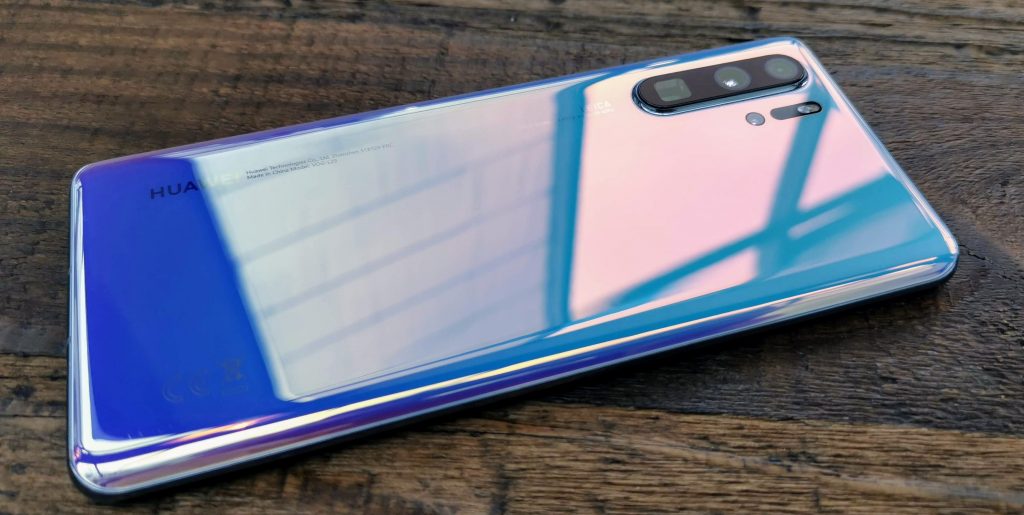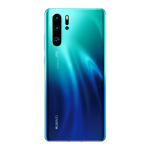After months of speculation, Huawei has finally unveiled its P30 smartphone series at a launch event in the heart of Paris. With a catchy promise to “rewrite the rules of photography”, Huawei clearly has photographers and enthusiasts in mind with its best smartphone cameras yet.
The successor to last year’s excellent P20, the P30 series shares much of the internals from last year’s Mate 20, though there have been improvements – primarily, to the camera but with a few other smart changes and evolutions as well.
The main photography change is the addition of a periscope-style lens that delivers 5x optical zoom. The P30 Pro hybrid zoom can go up to 10x, and at its farthest reaches it can do a whopping 50x digital zoom that’s surprisingly usable in the right circumstances.
There’s also the incorporation on a super spectrum sensor that combined with enhanced optics delivers up to 40% more light for amazing low light photography.

Huawei has launched two phones – the P30 and the P30 Pro. Both are extremely capable devices with similar features, but the focus is of course the P30 Pro, and for good reason.
Behind the P30 Pro’s 6.47-inch OLED display is a powerhouse of smartphone technology, brought together by Huawei’s Kirin 980 chipset, 8GB of RAM and 256GB of storage.
That’s enough to capture many holidays’ worth of photos without having to worry about running out of space, and with a camera setup this good, you’ll want to document every moment.
Rewriting the rules of smartphone photography
Huawei wowed the industry and consumers alike last year with the P20 Pro, when its camera (co-developed with Leica) fired a shot across the bow of the entire industry and still sits atop the DxOMark leaderboard. The P30 series has rather some shoes to fill.
The P30 features three traditional sensors like the P20 before it, with an additional fourth Time of Flight camera (as we’ve seen used by Oppo and, soon, LG) that’s used to assist with artistic bokeh effects and also a bit of AR fun.
The main camera is a 40MP “SuperSpectrum” sensor with a nice fast f/1.6 aperture lens. On wide-angle duty is a 20MP sensor with f/2.2 lens, and there’s an 8MP telephoto lens at f/3.4 with 5x optical zoom.

SuperSpectrum
Huawei’s placing a lot of emphasis on its big new 40MP sensor. It’s named SuperSpectrum because it captures a LOT more light than its peers, and even last year’s P20.
In any environment, the P30 Pro can capture as much light as is physically possible, taking night time scenes to vivid, colourful and amazing displays. Functional, useful low light photography is the current frontier in smartphones, and Huawei claims to have nailed it.
I’m inclined to agree, based on my own hands-on sample:

This photo, for example, was taken in pitch blackness. I could barely see anything with my own human eyes (or on the P30 Pro’s screen, when taking the photo) anything beyond black.
That SuperSpectrum sensor, though, captured everything – the vivid colour of the earth, the sky, and everything in between.
If we’re taking superpowers, the other sensors have their own, too.
The ultra-wide angle sensor can handle super macro photography at just 2.5cm focal length, as well as beautiful wide landscapes.
The telephoto lens can do 5x optical zoom, and combined with Huawei’s AI powers, it can reach a staggering 50x digital zoom. At this length, you’d expect the photos to be a little poor, and yes, they can be. Taken right, though, and those 50x zoom shots can be quite useful.
With both OIS and AI-powered digital image stabilisation, you can get away without a tripod in most situations, including night photography in very dimly lit scenes.
On the front of the P30 Pro is a 32MP f/2.0 setup which captures a reasonable amount of light and takes some pretty decent selfies for the social media generation. For the rest of us, perhaps it’s less useful, but it’s there.
As great as the smartphone camera setup is on the P30 Pro, though, the good news doesn’t stop there.
What else is inside?
Power to spare, and power to share.
A giant 4,200mAh battery claims to deliver up to two days real-world use, though we’d assume this more likely means a solid full day for a heavy user. The P20 didn’t disappoint with its battery life, and we’re expecting the P30 to push this to the next level.
With a 40W SuperCharger included in the box, charging that big battery doesn’t take long at all – just 30 minutes on the charger can add 70% charge to the phone, meaning you need never really be too worried about going flat ever again (provided you can find a charger occasionally).
You can also use the P30 Pro with a wireless charger and donate that power to other devices like the Mate 20.
In-screen fingerprint sensor
We’re definitely in the age of the in-screen sensor in 2019, with more and more phones sporting the feature. Amazingly, this wasn’t the case just a year ago – the P20 had a physical fingerprint reader on the front of the phone.
In the meantime, we’ve seen Huawei develop its in-screen reader in the Mate 20, and now the P30 is ready to refine the recipe.
The P30’s in-screen fingerprint sensor is in a more natural position, at the bottom of the display – it should make it easier to hit and easier to remember.
Minimal notch and Acoustic Display
There’s also a significantly reduced notch – more of a dewdrop if anything – which means more space for you to see what your phone is doing in the notification bar.
While the P20’s notch was contentious, it was ultimately inoffensive because of its size – something Huawei faced criticism for in the Mate 20. It’s nice to see this go the other way.
The P30 also takes a side forward in audio technology, with acoustic display technology delivering audio from the display itself, and while it seems that most media audio will route via a speaker at the bottom of the display, your phone audio will appear to come from the face of the phone itself, meaning there’s no wasted space with an earphone speaker cut into the display.
Time of Flight
That ToF sensor we talked about? It can do a few other party tricks too – it’s not just for photography.
Many will be familiar with the latest iPhones and their ability to measure objects in the real world, and Huawei’s P30 Pro can now do the same using the included HiVision capability. Measure lengths, volumes and more accurately and with nothing more than a smartphone. Neat.
What about the Huawei P30?
While the real buzz is about the P30 Pro, we can’t forget the P30 has also been announced. It shares many of its specs with the Pro variant, albeit with a couple of key differences.

For starters it’s a little smaller, with a 6.1-inch OLED display. The battery, too, is slightly smaller at 3,650 mAh (and without wireless charging), but that’s still a huge battery in a smartphone, so expect a full day and some with that.
Processing power is the same, and although 6GB of RAM is a little less, it’s still plenty – it’s the same configuration used in the Mate 20 Pro (and more than Google’s Pixel 3 with its well known memory choke).
Much of the photographic power in the P30 series is shared by the Pro and the P30 standard; the main differences are the zoom and wide-angle performance, and the lack of ToF sensor. The P30 shares the main 40MP SuperSpectrum camera used in the Pro, but a slightly lesser 16MP wide-angle camera, and an 8MP telephoto lens that does 3x optical zoom instead of 5.
For stunning low light photography, there really is no difference to mention – and this means you can get a great low-light shooter on a smartphone, with quite a saving over the more expensive P30 Pro.
Full specifications
| Specifications | Huawei P30 | Huawei P30 Pro |
|---|---|---|
| Display |
|
|
| SoC | 7nm HiSilicon Kirin 980:
|
7nm HiSilicon Kirin 980:
|
| RAM | 6GB | 8GB |
| Storage * AU Variants |
128GB | 256GB |
| Expandability | Up to 256GB through proprietary nano-memory card (in SIM 2 slot) | Up to 256GB through proprietary nano-memory card (in SIM 2 slot) |
| Battery | 3650 mAh | 4200 mAh – With 40W fast charging, and 15W fast wireless charging |
| Fingerprint Sensor | In-display | In-display |
| Rear Camera |
|
|
| Front Camera | 32MP | 32MP |
| Android Version | EMUI based on Android 9 Pie | EMUI based on Android 9 Pie |
| Price (AUD) | $1,099 | $1,599 |
Australian Availability
In two weeks time, on 16 April 2019, both the P30 Pro and the P30 will be on sale in quite a few places – a huge difference over last year’s P20 launch which was much more modest.
Following today’s launch announcement, pre-orders in Australia will be going live on 27 March.
Huawei is ranging a single configuration of P30 Pro in two colours – Breathing Crystal (a stunning white mixed with colours), and Aurora (a shiny blue successor to last year’s Twilight gradient).
The Australian P30 Pro will have a single configuration – 8GB RAM and 256GB storage – and will be available in single and dual SIM variants depending on retailer or carrier.
The single SIM variant will be available on Telstra and Vodafone plans, and the dual SIM will be on offer from Optus, as well as retailers JB HiFi, Harvey Norman, MobileCiti and Kogan.
The P30 Pro’s asking price is $1,599, and there’ll be carrier pricing announced shortly.

The P30 will be on sale at the same time for $1,099, in a 6GB / 128GB configuration. It, too, will be available on carrier from Vodafone (in single SIM) and Optus (in dual SIM), as well as the retailers listed above.
Those keen on a pre-order special needn’t worry; Huawei will be giving a bonus Sonos One speaker valued at $299 to all customers pre-ordering before 16 April.
Keep an eye out for our hands-on report coming very soon.
Ausdroid traveled to Paris, France as guest of Huawei to cover the P30 series launch.













Great review thanks – and that night shot is radical (also, it’s full of stars!)